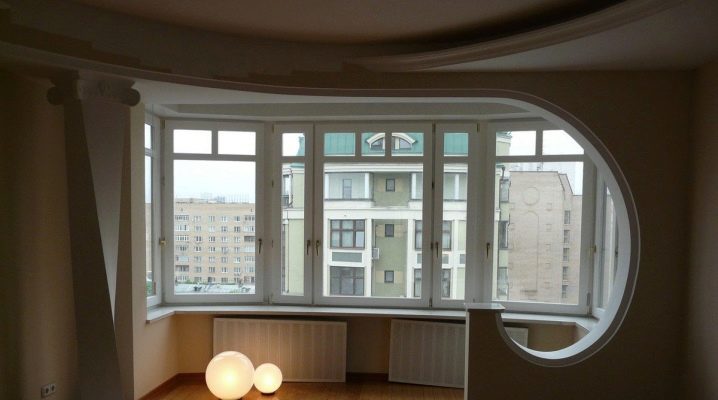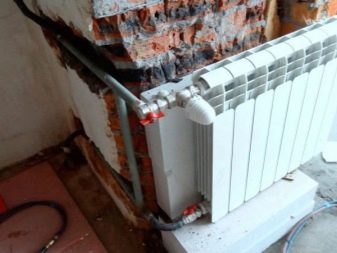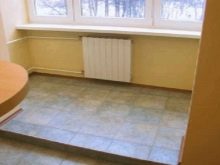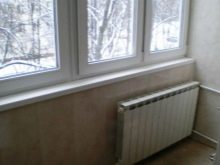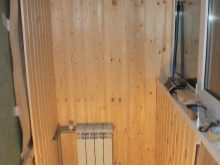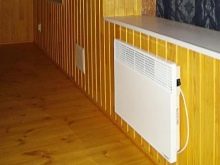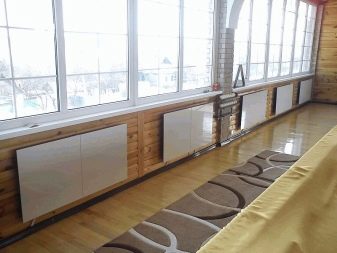Removing the battery to the balcony and loggia
The topic of removing the battery to balconies and loggias is not just technical; battery installation in apartments is highly regulated. That is why it is important for all owners and even just tenants to know whether it is possible to take the battery out to the balcony in the apartment. A separate related problem is electric and other heaters for heating the balcony.
Existing restrictions on the removal of the battery to the balcony
Literally every square meter in an apartment is very valuable, and therefore it is extremely important to use them efficiently. But on the way to arranging balconies and turning them into an extension of ordinary living rooms, an important obstacle is encountered - regulatory standards. They prohibit, contrary to the opinion of some people, not only the demolition of capital walls. Heating batteries cannot be taken out onto the balconies - and this is directly enshrined in the housing code. The fact is that the balcony there is directly prohibited from being classified as living space, and the redevelopment of areas of apartments that are not such is prohibited.
Nevertheless, there are certain chances of success. And with some diligence, it is possible, without breaking the law, to heat the balcony from the common house heating main. The reasons for the restrictions are quite clear:
-
the risk of flooding the balconies below (due to the risk of freezing the radiator);
-
increased load on heating circuits;
-
increased costs (since the tariff depends on the area of the house, an increase in the heated space means additional charges, including for all other residents as well);
-
difficulties in selling an apartment or otherwise using it as an asset (all changes that are not reflected in the documents, especially in direct violation of the law, will inevitably block the transaction).
If you violate the established order and do everything arbitrarily, the matter will not end with legal claims from neighbors and problems with real estate turnover. For such an action, there are also penalties. The authorities will not limit themselves to this either - they will issue an order to remove the battery to its proper place. You will either have to do all this in a short time at your own expense, or through the court to prove the correctness and legal impeccability of your actions, which is long, expensive, tedious and not always possible in principle.
To prove their innocence, they enlist an act of technical expertise confirming the absence of risks, and the signatures of all neighbors that they do not mind.
In what cases is it possible and how to legally pass the battery?
Such situations are quite possible. And you can easily find references to the stories of people who were allowed to transfer batteries to the loggia. For this, however, it turned out that it was not enough for them to simply glaze and insulate the room. It was necessary to obtain a sanction for the redevelopment of the apartment and the addition of a new plot to it. Such a permit is issued by the housing inspectorate.
Important: contacting there is mandatory both when transferring an old radiator and when installing a newly purchased part of the heating circuit. Moreover, even simply removing the battery without moving it anywhere is also unacceptable. You should immediately tune in that the approval will take at least 1.5-2 months. And all the same, trying to legitimize an already delivered radiator in the housing inspection is the same as playing the lottery. The availability of a well-developed package of documents and accurate calculations helps to increase the chances.
We need materials describing and justifying:
-
number and dimensions of sections;
-
points of their placement;
-
limiting and operating pressures and temperatures;
-
other characteristics of the coolant.
Only professionals can think over and prepare all this properly. Designers are required to take into account the requirements of specific regional legislation, which may be stricter than federal standards. It is frankly unreasonable to trust the stories of those people who allegedly lived for many years without obtaining permits for transfer. Someone is silent about the technical details that made it possible to do everything legally. Someone embellishes reality, and in some cases the point is simply that the violation has not yet been detected.
How to install correctly?
But now the long-awaited permission has been received. Finally, you can start installing the heater and connecting it. But you will have to find out what parameters are given in the documents when agreeing, and rely on them - both when selecting heating equipment and when installing it. Usually, however, they simply move the existing battery, but this is not entirely correct - one of the rooms remains without much heating. In the economy class, both cast iron and steel structures deserve attention.
It is useful, however, to pay a little more and purchase an aluminum or bimetallic product. It is not very correct to use designer models on the balcony, even if there are enough funds. When choosing, they are guided by the following considerations:
-
cast iron heats up for a long time, but also cools down slowly;
-
steel heats up faster, but serves less and costs more;
-
due to their lightness, aluminum products are preferable for mounting on the balcony, unless otherwise considered.
It is extremely important that you do not try to do this kind of work yourself. Even if you have your own experience in repair and welding. Fundamental rules:
-
when fixing the radiator on the wall opposite to the window, it is required to use a foil screen;
-
before the installation itself, it is necessary to turn off the entire riser;
-
it is advisable to use a plastic-aluminum hose to supply the coolant;
-
removing the pipe from the wall, immediately put tees with valves;
-
the radiator must be supported with three brackets: one - under the battery, two - above it;
-
the accuracy of the location should be carefully checked using a level;
-
it is necessary to control the exact distances to window sills, walls and floors;
-
pipes should not bend up or down to reduce the risk of air congestion;
-
it is advisable to mount the battery using a jumper.
Pressure testing should be carried out during pipe-laying. In this mode, water should be supplied evenly. The concrete for laying the pipeline must be properly cleaned of any irregularities. Pipes must be selected as carefully as possible.
Their connection should be made as high quality as possible.
Alternative solutions for balcony heating
But still the question arises: "If it is so difficult to install a heating radiator according to the law, is it not better to use other heating means?" And almost always we are talking about electrical equipment, since it is unacceptable to use fire sources of heat on the balcony, and it is simply dangerous. Experts consider the best choice to use infrared models, and not outdated "wind turbines". If you also supplement them with a warm floor, then it will be as comfortable on the balcony as in the apartment itself. Automation stops heating as soon as it reaches a critical value.
Any type of heater must be:
-
small-sized;
-
meeting strict safety requirements;
-
equipped with a thermostat;
-
resistant to moisture.
To set up a winter garden, precise adjustment of the thermal regime is important. The power depends on the area of the room. If it exceeds 5 m2, you will have to use a reliable infrared device or lay out a warm electric floor.To use the loggia as a regular room, it is necessary to maintain the temperature there year-round at least 20 degrees. If you need a convenient and simple solution, you can use an oil or convector heater on wheels.
Ceramic panels are in demand. They are good if the room is visually minimalistic. The efficiency exceeds 90%. Environmental and fire safety is guaranteed. However, ceramic technology is very expensive.
The “warm floor” system is good in the sense that it allows you to use a connection to the “smart home” complex.
How to take the battery out to the balcony, see the video below.
